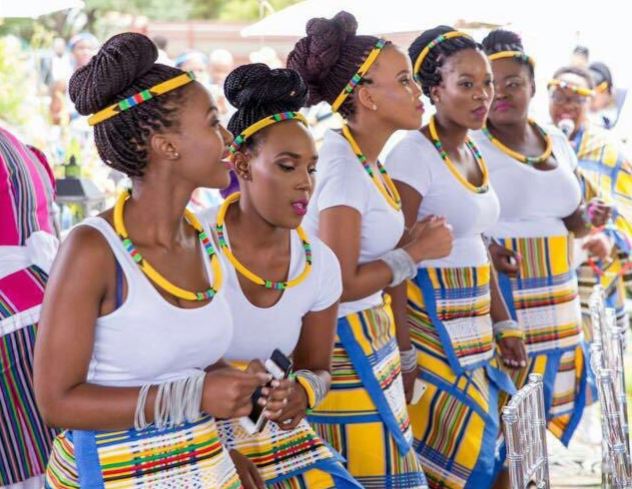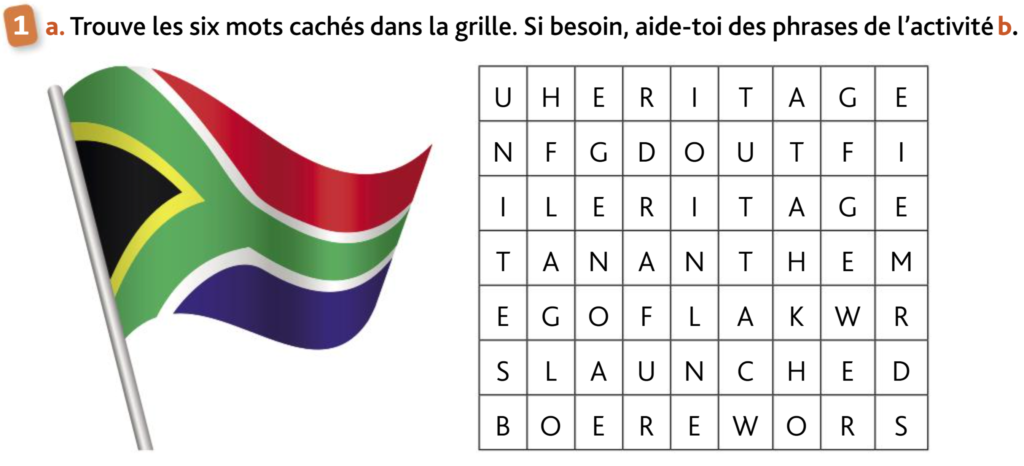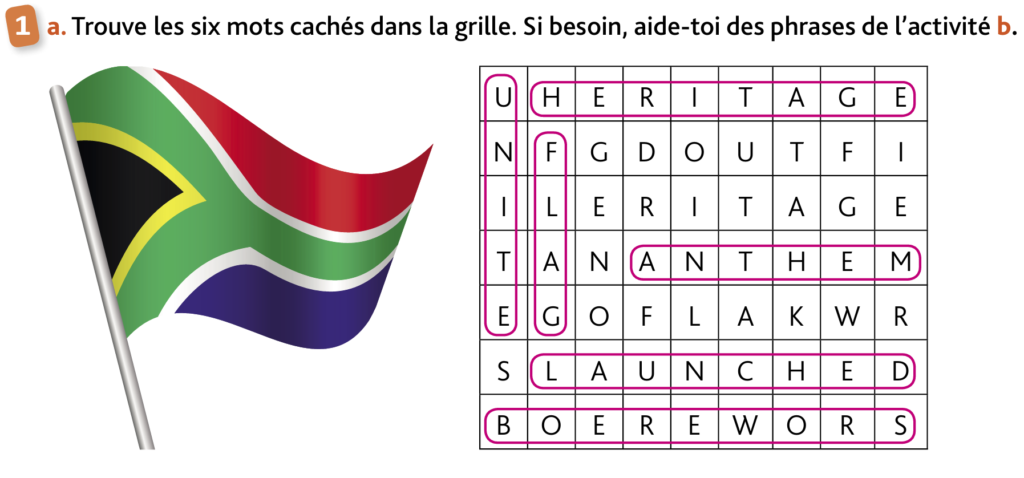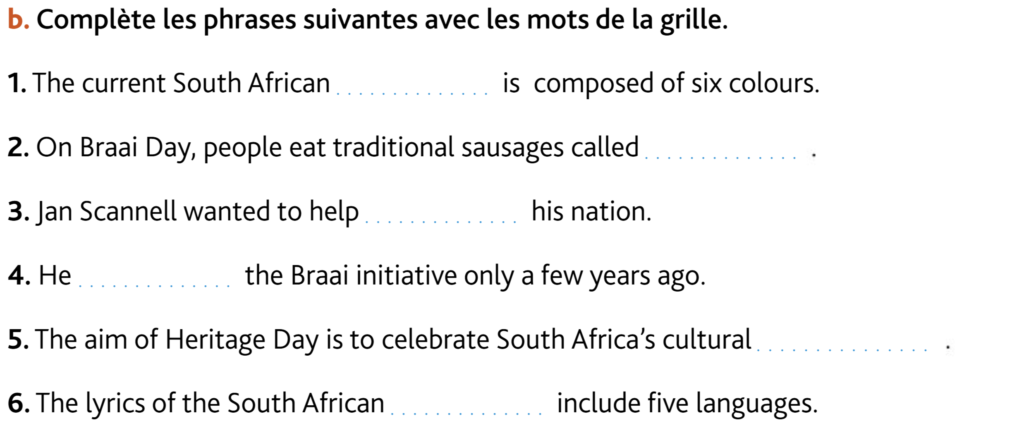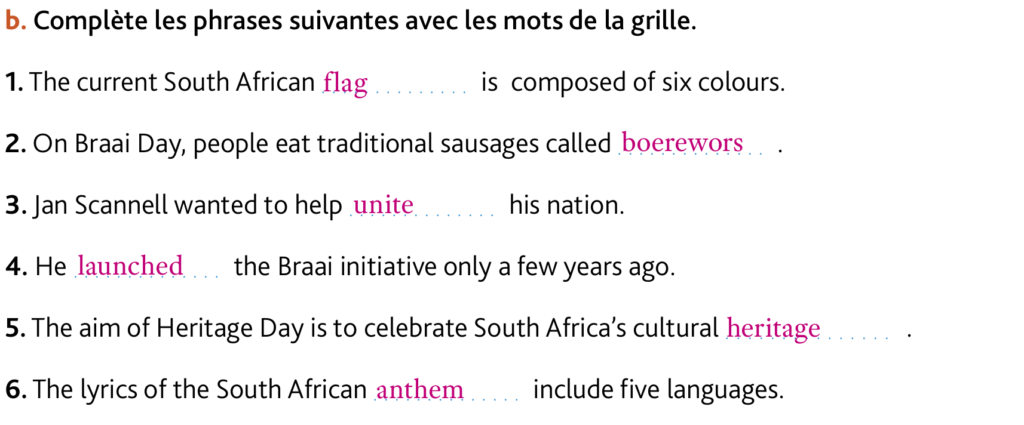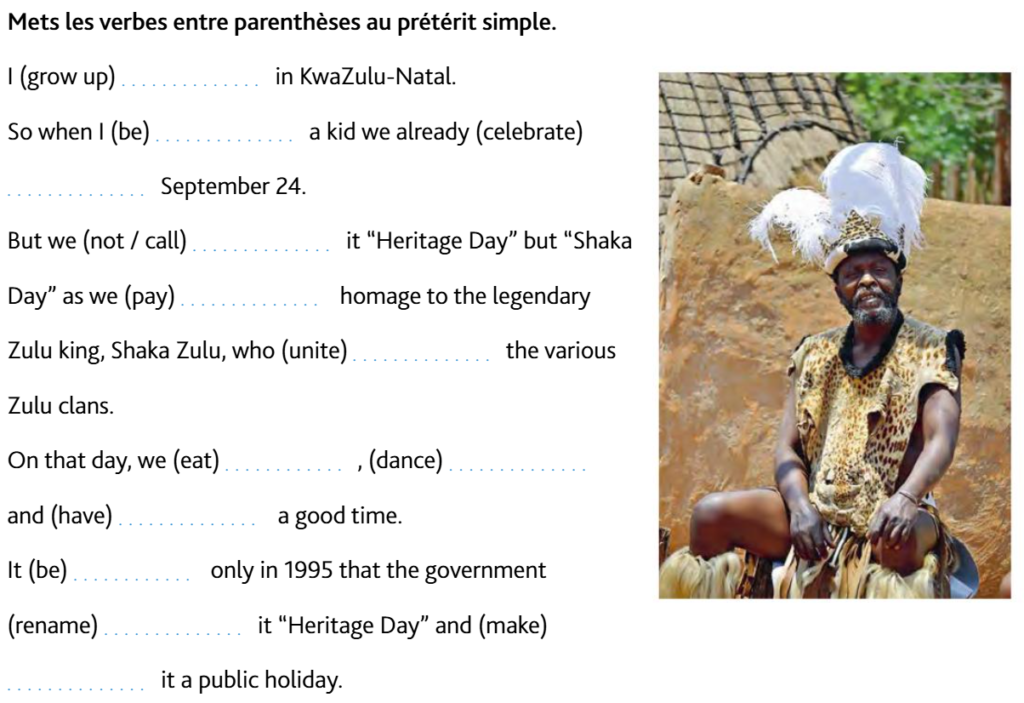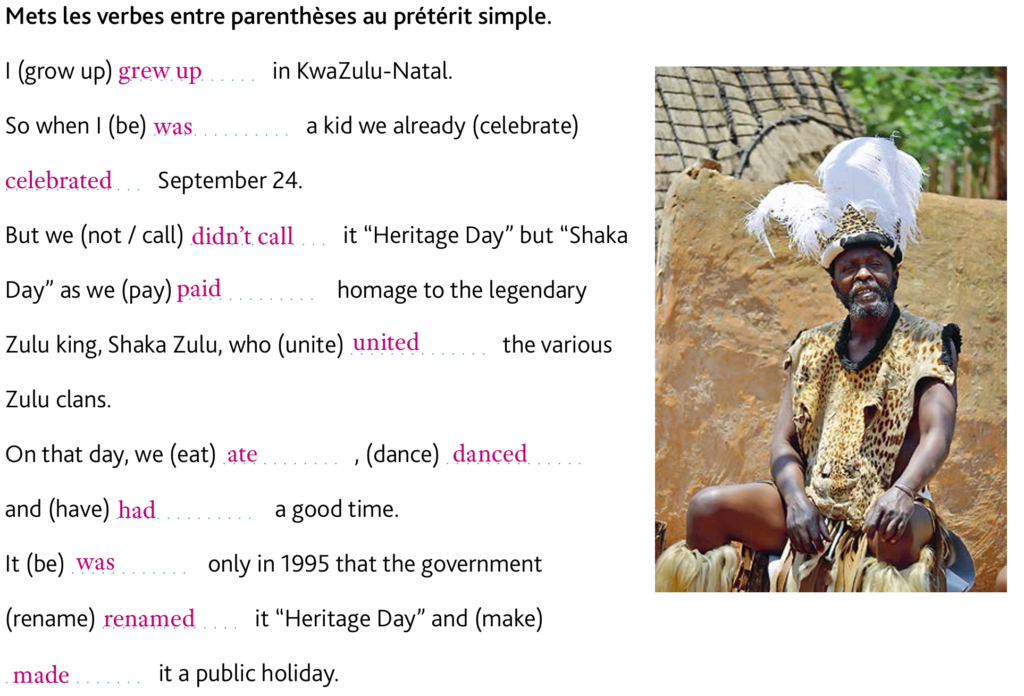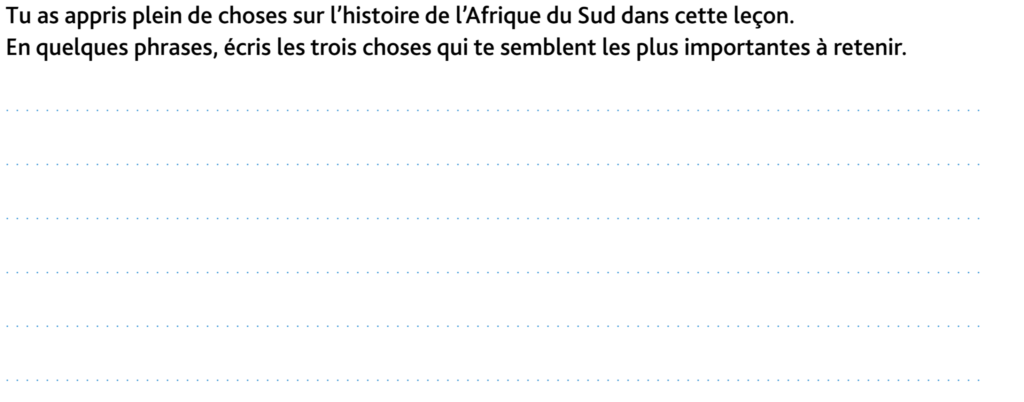Objectif de communication :
- comprendre et raconter des évènements passés
Objectifs linguistiques :
- le prétérit simple
- la prononciation de la terminaison -ed
- le lexique de la culture sud-africaine et des célébrations nationales
Resources :
PDF: Heritage Day
PDF: South Africa Research
PDF: Worksheet 1
Contents
Geography
Preparing
- Where is South Africa?

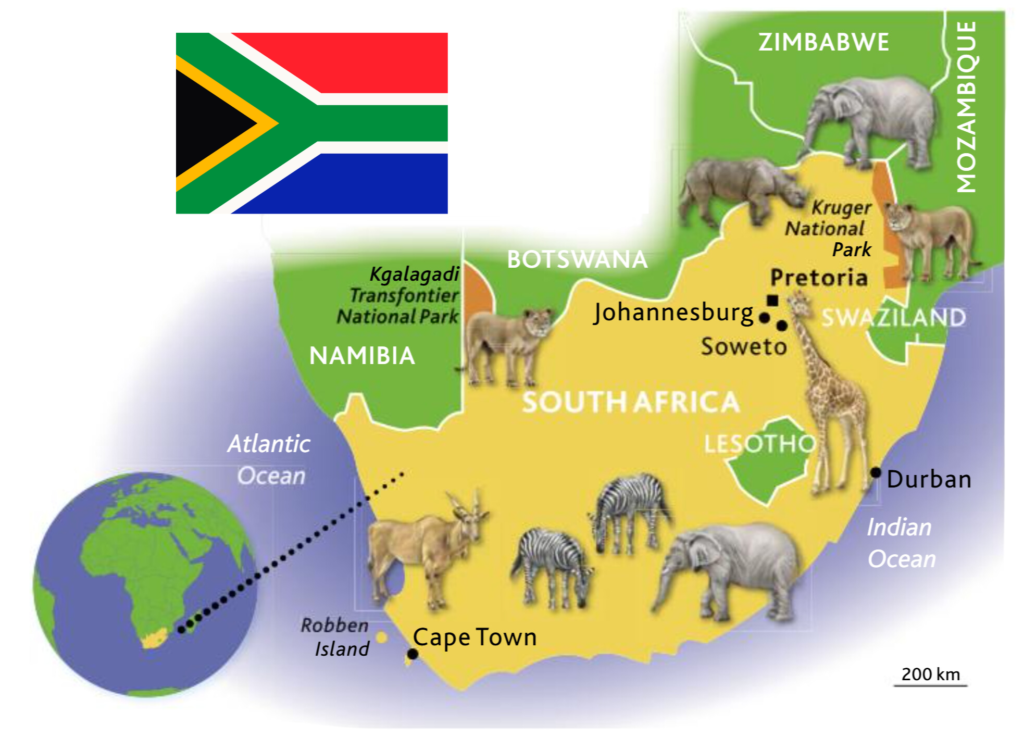
2. Listen and take notes about different South African places.
- Pretoria:
- Johannesburg:
- Soweto:
- Cape Town:
- Kruger National Park:
- Robben Island:
Text: South African Cities
Pretoria is the capital of South Africa, but the largest city is Johannesburg. It’s the country’s financial center. Soweto is another big city in South Africa with more than 2 million people. It’s a well-known black district and resistance movements started here in the 1960s. Cape Town is famous for its beaches and people say it is one of the most beautiful cities in the world. Kruger National Park is home to a huge number of species and is well-known all around the world. Robben Island is a national monument and museum but in the 20th century it was a prison for political prisoners.3. Use your notes. Where are these places?
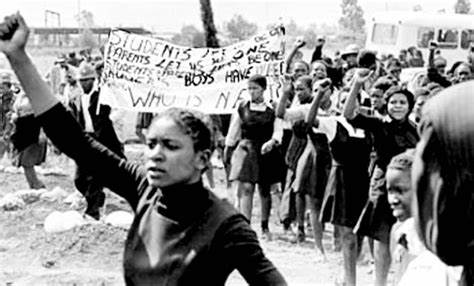
Soweto

Cape Town
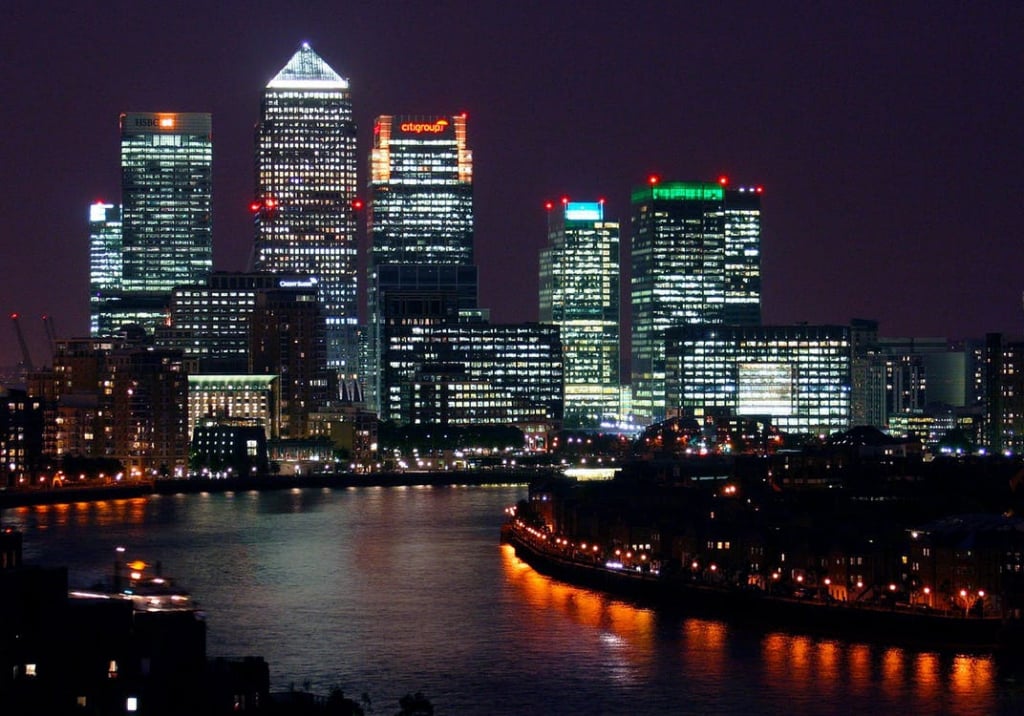
Johannesburg
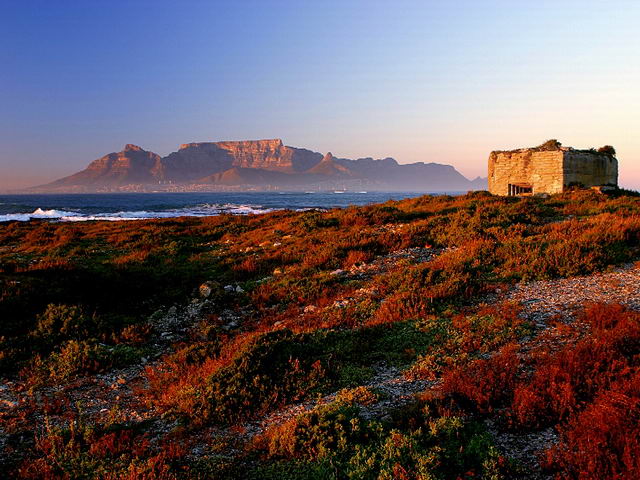
Robben Island

Kruger National Park
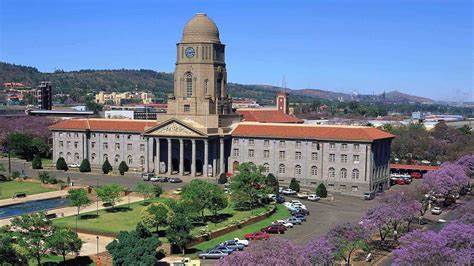
Pretoria
Le Préterit Simple
1a. Observer et copier les phrases ci-dessous.
Souligne les verbes conjugués au prétérit simple en rouge et souligne en vert les marqueurs de temps.
- The first Heritage Day was in 1995.
- Resistance movements started in Soweto in the 1960s.
- The government tried to celebrate South Africa’s unity in diversity.
- In 1995, the government decided to make it a public holiday.
- Robben Island stopped being a prison in 1997.

- The first Heritage Day was in 1995.
- Resistance movements started in Soweto in the 1960s.
- The government tried to celebrate South Africa’s unity in diversity.
- In 1995, the government decided to make it a public holiday.
- Robben Island stopped being a prison in 1997.

1b. Copier et complète.
- On utilise le prétérit simple pour parler de faits …………. sans lien avec le …………..
- À la forme affirmative, on ajoute la terminaison …………. à la base verbale si le verbe est régulier.
- Si le verbe se termine par -y, le -y devient ………….. Exemple : try → …………..
- Si le verbe se termine par une voyelle et une consonne, la consonne finale est …………..
Exemple : stop → ………….. - Si le verbe se termine par -e, on ajoute simplement ………….. Exemple : decide → …………..
- Les verbes irréguliers au prétérit ne se terminent pas par ………….. Il faut les …………..
- On utilise le prétérit simple pour parler de faits passés sans lien avec le présent.
- À la forme affirmative, on ajoute la terminaison ed à la base verbale si le verbe est régulier.
- Si le verbe se termine par -y, le -y devient ied Exemple : try → tried.
- Si le verbe se termine par une voyelle et une consonne, la consonne finale est doublée
Exemple : stop → stopped - Si le verbe se termine par -e, on ajoute simplement d Exemple : decide → decided
- Les verbes irréguliers au prétérit ne se terminent pas par ed Il faut les apprendre.
2a. Observe les phrases.
Souligne le verbe en rouge et l’auxiliaire did en bleu.
- Heritage Day didn’t exist before 1995.
- South Africa didn’t have a day to celebrate its cultural diversity before 1995.
- Robben Island wasn’t a museum in the 20th century.
- Heritage Day didn’t exist before 1995.
- South Africa didn’t have a day to celebrate its cultural diversity before 1995.
- Robben Island wasn’t a museum in the 20th century.
2b. Lis et complète.
- À la forme négative, on utilise l’auxiliaire …………. auquel on ajoute la négation ………….. (forme contractée : ………….). Le verbe est sous forme de base verbale.
- Be ne fonctionne pas comme les autres verbes. Comme be est lui-même un auxiliaire, il porte la …………. et devient …………. ou …………. à la forme négative au prétérit.
- À la forme négative, on utilise l’auxiliaire did auquel on ajoute la négation not. (forme contractée : didn’t). Le verbe est sous forme de base verbale.
- Be ne fonctionne pas comme les autres verbes. Comme be est lui-même un auxiliaire, il porte la négation et devient wasn’t ou weren’t à la forme négative au prétérit.
3. Complète le tableau récapitulatif
| Forme affirmative | Forme négative |
|---|---|
|
Verbe être (to be) – I / he / she / it …………. – you / we / they …………. |
Verbe être (to be) – I / he / she / it …………. – you / we / they …………. |
| Autres verbes | |
|
Verbes réguliers: sujet + V + _______
⚠️ Attention aux modifications orthographiques !
|
Forme négative des autres verbes sujet + _______ + _______ |
3. Complète le tableau récapitulatif
| Forme affirmative | Forme négative |
|---|---|
| Verbe être (to be) – I / he / she / it was – you / we / they were | Verbe être (to be) – I / he / she / it was not / wasn’t – you / we / they were not / weren’t |
| Autres verbes | |
| Verbes réguliers: sujet + V + -ed ⚠️ Attention aux modifications orthographiques !
Verbes irréguliers: à apprendre par cœur | Forme négative des autres verbes sujet + did not / didn’t + V (base verbale) |
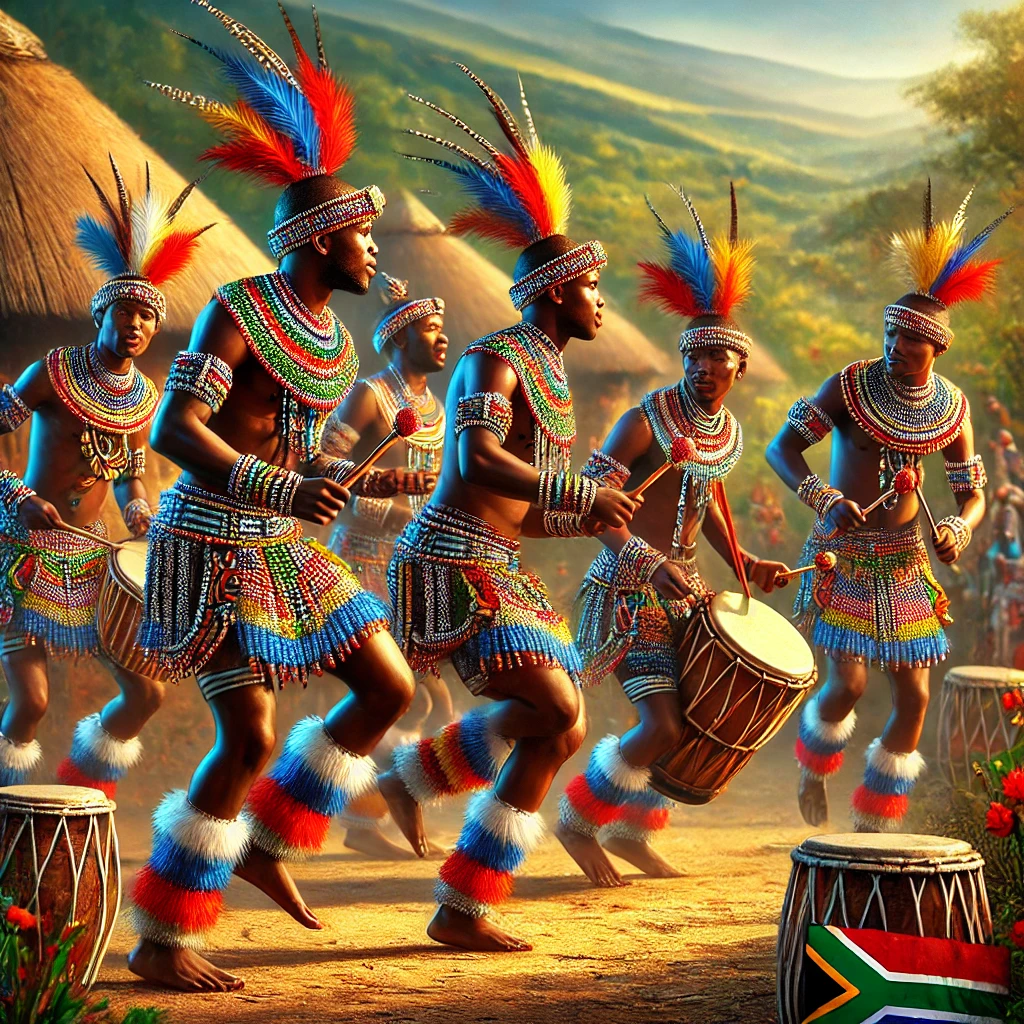
Heritage Day
1. Look at these photos depicting « Heritage Day ».
Guess what Heritage Day is, and what people do on this day.
- I think Heritage Day is ….
- I think you can …. during Heritage Day.
- celebrate = célébrer
- create = créer
- craft = fabriquer
- braai = barbecue (SA)
- cook = cuisiner
- wear = porter
- respect = respecter
2. Read the text « Heritage Day ».
Read your copy of Heritage Day, and copy the vocabulary.
Vocabulary Box
- celebrated = célébré
- highlighted = mis en valeur
- racial = racial(e)
- indigenous = indigène
- stadiums = stades
- fair = foire
- profound = profond
- encourages = encourage
- democratically-elected = démocratiquement élu
- diversity = diversité
- heritage = patrimoine
- leaders = dirigeants
Trucs & Astuces
Quand tu ne connais pas le sens d’un mot, aide-toi du contexte et des mots qui sont autour pour en deviner le sens.
Dans la phrase Some people wear traditional outfits, le verbe utilisé est wear, qui signifie
« porter des vêtements », et le mot outfit est précédé de l’adjectif traditional,
qui est un mot transparent.
Que peut donc vouloir dire outfit ?
3. Try to infer the meaning of the following words. Use the context & add them to the Vocabulary Box.
- public holiday: ………………………………………..
- to showcase: ………………………………………..
- outfit: ………………………………………..
- to gather: ………………………………………..
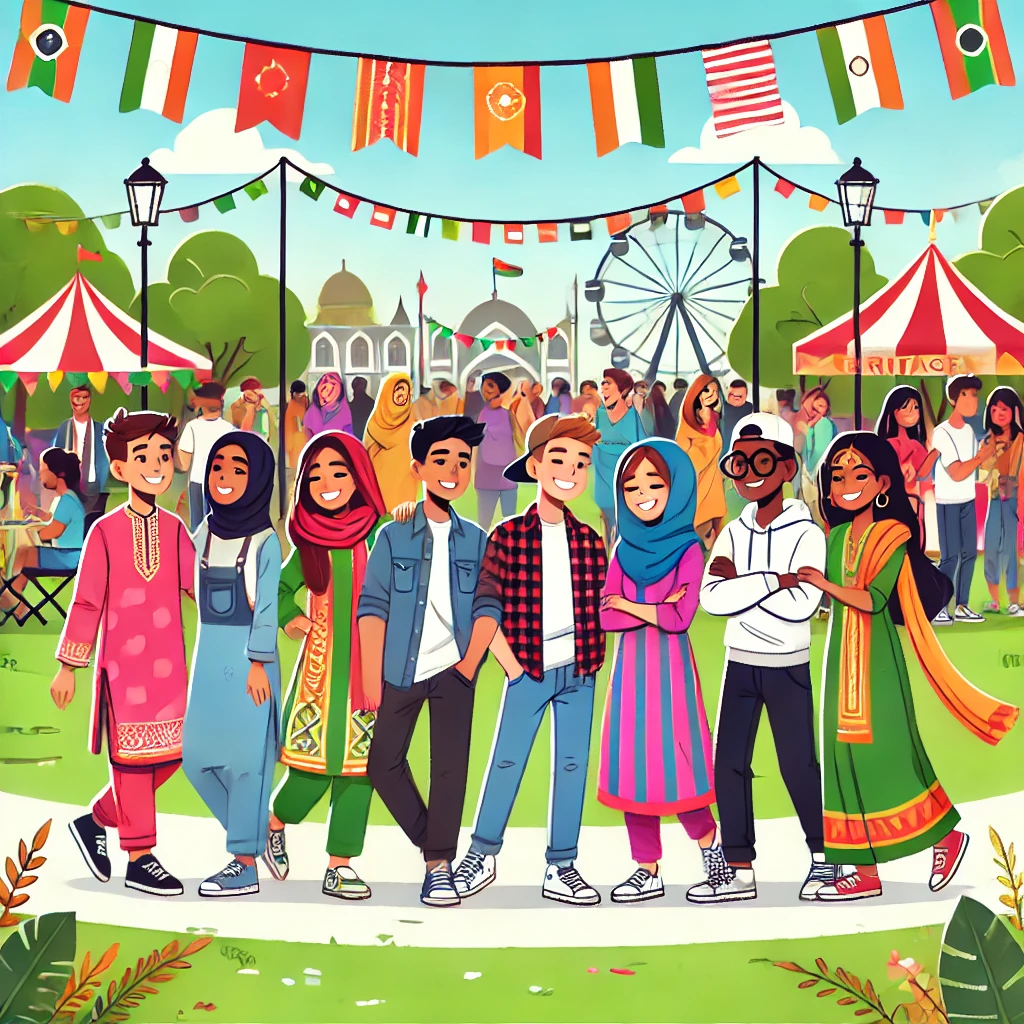
- public holiday = jour férié
- to showcase = mettre en valeur
- outfit = tenue
- to gather = se rassembler
4. Now, recap what you know about Heritage Day using your own words.
Heritage Day is ………………………………………….. ………………………………………………………………………… ………………………………………………………………………… …………………………………………………………………………
Braai Day
Vocabulary
- establish = établir
- corporate = d’entreprise
- ladder = échelle
- patron = parrain
- institution = institution
- discourage = décourager
- tradition = tradition
- supermarket = supermarché
- vegetables = légumes
- embers = braises
- bind = lier
- unlikely = improbable
- conference = conférence
- boerewors = boerewors (saucisse sud-africaine)
- spices = épices
1. Look at the photo and imagine who Jan Scannell is, and what he did.
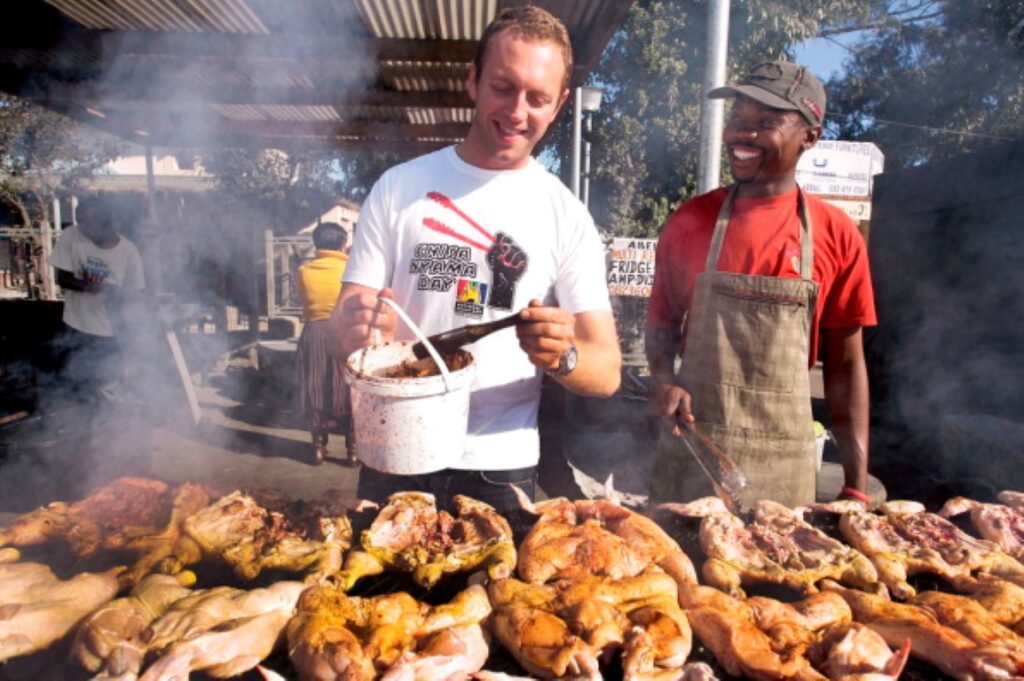
- In the photo, I can see two men. They are preparing food at a giant BBQ.
- I think the man in the middle of the photo must be Jan Scannell. Maybe he created National
Braai Day. - On the right, a black man is helping him. They are laughing together. They both look very
happy. - On his t-shirt, there is a logo of National Braai Day with the South African colours.
2a. Listen to the first part of his interview and take notes.

2b. Recap what you know.

3a. Listen to the second part of his interview and take notes about the two men.
3b. Use your notes and recap.
4a. Listen to the end of the interview and write the words you hear.
beautiful • boerewor • village • sausage • saw • national • anthem • emblem • blind • bind • eleven • eighteen • encourage • official • unofficial • transition • languages • one • together • tradition • common

4b. Recap this last part using the words you have circled.
Write your recap here using the words you just wrote.
Prononciation of -ed
The Melody of English: La prononciation de la terminaison -ed
1. a. Écoute les mots suivants et indique pour chacun d’eux comment se prononce la terminaison -ed.
created → /…../ established → /…../ settled → /…../

created → /ɪd/ established → /t/ settled → /d/
1. b. Écoute et ecrire la bonne prononciation de la terminaison -ed.
1. looked 2. united 3. lived 4. launched
5. included 6. called 7. hoped
| /d/ | /t/ | /ɪd/ |
|---|
Réponses
- looked → /t/
- united → /ɪd/
- lived → /d/
- launched → /t/
- included → /ɪd/
- called → /d/
- hoped → /t/

1c. Copier et complète.
- La terminaison -ed se prononce :
- /…../ après les sons /t/ ou /d/ comme dans _______ ;
- /…../ après les sons /ʃ/, /f/, /s/, /k/, /ʧ/, /p/ comme dans _______ ;
- /…../ après tous les autres sons, comme dans _______ .
- Remarque : tu peux utiliser cette règle pour les verbes réguliers au prétérit, mais également pour les adjectifs et participes passés se terminant en -ed.
- /ɪd/ après les sons /t/ ou /d/ comme dans wanted
- /t/ après les sons /ʃ/, /f/, /s/, /k/, /ʧ/, /p/ comme dans danced
- /d/ après tous les autres sons, comme dans called
2a. Comment se prononce la terminaison -ed dans les mots suivants ? Recopier les mots et utilise le code couleur indiqué.
created /ɪd/ established /t/ settled /d/
celebrated • danced • varied • gathered • wanted • visited • showcased • controlled

- created → /ɪd/
- established → /t/
- settled → /d/
- celebrated → /ɪd/
- danced → /t/
- varied → /d/
- gathered → /d/
- wanted → /ɪd/
- visited → /ɪd/
- showcased → /t/
- controlled → /d/
Research
1. Do some research.
Take the research document and complete it at home. You will need to research the information yourself.
